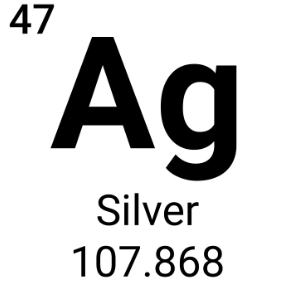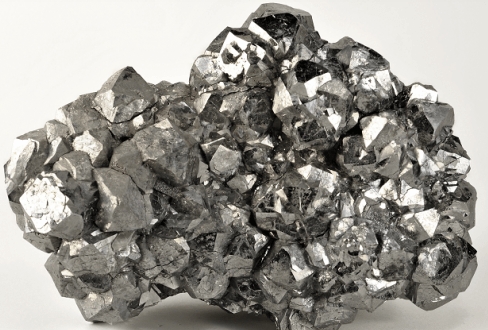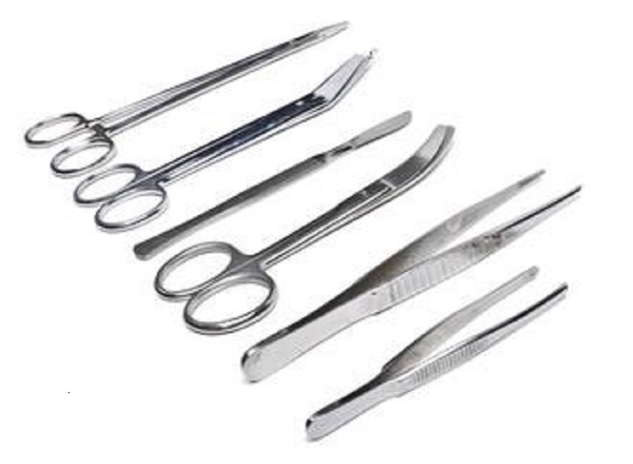Melting Point Of Silver: CNC Machining Material Guide
The melting point of silver plays a critical role in industries, artistry, and cutting-edge technology. Whether you’re crafting fine jewelry, designing electronic components, or smelting metals, understanding silver’s melting properties is essential for precision and quality. Let’s uncover its significance.
The melting point of silver is 962°C (1763°F), a temperature that enables its versatile use across multiple fields. From intricate jewelry designs to high-performance electronic parts, silver’s melting behavior is shaped by purity, alloying, and environmental factors, making it indispensable in modern applications.
Let’s continue reading below to discover the unique properties of silver.
Properties of Silver
Silver is renowned for its exceptional combination of physical, chemical, and mechanical properties, making it essential across various sectors, from electronics to jewelry and industrial applications.

Thermal and Electrical Conductivity
Silver boasts the highest electrical and thermal conductivity of all metals. This makes it the material of choice for critical applications like precision electronic components, circuit boards, and heat transfer systems in high-performance technologies. Its unmatched ability to efficiently conduct heat and electricity ensures minimal energy loss and high reliability.
Reflectivity and Luster
Reflecting nearly 95% of visible light, silver is a preferred material for creating high-quality mirrors, optical instruments, and decorative surfaces. Its bright, lustrous appearance also makes it a staple in luxury goods such as jewelry, silverware, and luxury coatings, where visual appeal is paramount.
Ductility and Malleability
Silver is highly ductile and malleable, meaning it can be drawn into ultra-thin wires or beaten into sheets without breaking. These properties make it invaluable in fine jewelry, intricate sculptures, and precision instruments where detailed craftsmanship is required.
Corrosion Resistance
While silver can tarnish due to exposure to sulfur-containing compounds, it remains highly resistant to corrosion and oxidation in most other environments. This characteristic ensures its durability and longevity in demanding settings, including medical tools, marine components, and industrial machinery.
Note: If you want to learn more about corrosion, you can read the following article: Does Aluminum Rust or Corrosion?
Who Discovered Silver?
Silver was one of the first metals discovered and used by humans, with evidence of its use dating back to 3000 BCE in regions like Mesopotamia and Egypt. Ancient civilizations valued silver for its beauty, rarity, and ease of extraction. Over time, silver became a cornerstone of trade and currency, as well as a material for tools, ornaments, and religious artifacts.
What is the Melting Point of Silver?
The melting point of silver is at 962°C, which is equivalent to 1763°F. This melting point is considered relatively moderate when compared to the melting points of numerous other metals. This characteristic allows silver to find applications across various industries, including electronics, jewelry, and photography.
Understanding silver’s melting behavior is crucial for several processes such as refining, alloying, and precision crafting. The ability to melt and reshape silver facilitates its manipulation into fine objects and components. Furthermore, temperature control during these processes is essential to maintain the integrity of the metal and ensure optimal results in both functional and aesthetic aspects.

What is the Boiling Point of Silver?
The boiling point for silver is around 2162°C, or 3924°F. At this temperature, silver transforms into a gaseous state, which is crucial in applications like vapor deposition. This process is commonly used for coating surfaces with a thin layer of silver, particularly in electronics, mirrors, and optics.
Factors Affecting the Melting Point of Silver
The melting temperature of silver can be influenced by several factors that play a critical role in its applications, such as in CNC machining, jewelry production, and electronics. Below are the main factors that affect the melting point of silver.
1. Purity of Silver
The melting point of pure silver is 962°C (1763°F). However, the purity of silver plays a significant role in determining its exact melting temperature. When silver is alloyed with other elements or impurities, the melting temperature may change. For instance, even small amounts of impurities such as sulfur or zinc can lower the melting point slightly. For industries requiring high purity, understanding this variation is essential, as it impacts processes such as refining, casting, and precision crafting.
2. Alloying Elements
One of the most common ways to modify the properties of silver is by adding other metals to form alloys. Sterling silver, which consists of 92.5% silver and 7.5% copper, has a lower melting point of around 893°C (1639°F), due to the copper content. Adding copper improves the metal’s hardness and strength but reduces the overall melting point compared to pure silver. Similarly, other alloying elements such as zinc, tin, and cadmium can further alter the melting behavior, making it crucial to understand the melting point of various silver alloys for specific applications like soldering and brazing.
3. Environmental Conditions
The melting point of silver is primarily determined under standard atmospheric pressure. However, environmental conditions can influence the temperature at which silver melts. When silver is exposed to vacuum or low-pressure environments, it may melt at slightly lower temperatures due to changes in the material’s atomic structure. In contrast, an increase in pressure can slightly elevate the melting point. Industries that require precise thermal management, such as aerospace or high-performance manufacturing, must take these variations into account when working with silver.
4. Heat Transfer and Thermal Conductivity
Silver has the highest thermal conductivity of any metal, making it an excellent conductor of heat. This property ensures that when silver is heated, it quickly reaches its melting point, allowing for uniform melting in applications such as CNC machining or casting. The efficiency of heat transfer, however, can be affected by external factors like the rate of heating and the type of equipment used. A controlled heating process is essential in achieving consistent results, particularly when melting silver for intricate or precision-based applications.
Each of these factors plays a crucial role in determining the melting temperature of silver, affecting its applications across various industries. Whether you’re working with pure silver, alloys, or specific environmental conditions, these factors must be carefully considered to optimize processes like silver soldering, casting, or other precision manufacturing tasks.
Silver Melting Point: Comparison with Other Metals
The melting point of silver is approximately 961.8°C (1,763.2°F). Below is a comparison of silver’s melting point with that of other metals, highlighting the differences in temperature and their respective applications.
| Metal | Melting Point (°C) | Melting Point (°F) | Difference from Silver (°C) | Difference from Silver (°F) |
|---|---|---|---|---|
| Copper | 1,984 | 3,623 | 1,022.2 | 1,859.8 |
| Gold | 1,064 | 1,947 | 102.2 | 183.2 |
| Aluminum | 660.32 | 1,220.58 | 301.48 | 542.62 |
| Lead | 327.46 | 621.43 | 634.34 | 1,141.77 |
| Iron | 1,538 | 2,800 | 576.2 | 1,036.8 |
| Titanium | 1,668 | 3,034 | 706.2 | 1,270.8 |
| Platinum | 1,768 | 3,214 | 806.2 | 1,450.8 |
| Nickel | 1,455 | 2,651 | 493.2 | 912.8 |
| Zinc | 419.5 | 787.1 | 542.3 | 976.1 |
| Tin | 231.93 | 449.47 | 729.87 | 1,313.73 |
Silver has a moderate melting point, making it ideal for various applications, including in jewelry, electronics, and CNC machining. Metals such as copper, gold, and platinum have significantly higher melting points, which is crucial in industries requiring high-temperature resistance. On the other hand, metals like aluminum, lead, and zinc have lower melting points, which influences their suitability for different industrial applications.
Applications of Silver
1. Electronics
Due to its exceptional conductivity, silver is used in high-precision components such as printed circuit boards, conductive adhesives, and solar panels. Its thermal stability also makes it ideal for applications in aerospace and telecommunications.
2. Jewelry and Fine Art
Silver’s luster and malleability have made it a staple material for centuries in crafting fine jewelry, decorative objects, and coinage. Sterling silver melting point is particularly relevant here, as it allows artisans to shape and cast intricate designs.
3. Medical Applications
Silver is antimicrobial, making it a critical material for wound dressings, coatings for surgical tools, and water purification systems. Its ability to inhibit bacterial growth is harnessed in modern medicine.

4. Industrial and CNC Machining
The melting temperature of silver makes it a suitable material for custom components in CNC machining. Silver is commonly used for precision parts in aerospace, automotive, and industrial machinery due to its strength and thermal properties.
5. Mirrors and Optics
Silver is used in high-quality mirrors and optical equipment due to its superior reflectivity. Vapor deposition techniques rely on the boiling point of silver to create thin coatings for these applications.
Full List of Metal Melting Points
Here is a comprehensive list of the melting and boiling points of various metals:
| Metal | Melting Point (°C) | Boiling Point (°C) |
|---|---|---|
| Aluminum | 660 | 2470 |
| Copper | 1085 | 2562 |
| Gold | 1064 | 2856 |
| Iron | 1538 | 2862 |
| Platinum | 1768 | 3825 |
| Silver | 962 | 2162 |
| Titanium | 1668 | 3287 |
| Nickel | 1455 | 2913 |
| Zinc | 419.5 | 907 |
| Lead | 327.46 | 1749 |
| Tin | 231.93 | 2270 |
The melting temperature of silver (962°C) is moderate compared to others, making it versatile in applications requiring precision and a moderate heat threshold, such as electronics, jewelry, and CNC machining. Other metals like platinum and titanium have much higher melting and boiling points, while metals like zinc and lead have relatively low melting points, impacting their applications in various industrial sectors.
Frequently Asked Questions About Melting Point Of Silver
How to Melt Silver?
Melting silver is a straightforward process, but it requires attention to detail to ensure a clean and successful result. To melt silver, you’ll need a melting furnace or a torch, crucible, and safety equipment. First, place the silver into a crucible and heat it slowly using a propane torch or a furnace. The temperature must reach 962°C (the melting point of silver) for the metal to transition from solid to liquid. Ensure to monitor the temperature and avoid overheating. Once the silver has completely melted, it can be poured into molds to form desired shapes.
What Process Does Polishing Belong To?
The melting temperature of silver is approximately 962°C (1,763.2°F). This temperature is moderate compared to many other metals and is vital for processes like casting, alloying, and jewelry making. Silver’s melting point is relatively low in comparison to gold (1,064°C) and platinum (1,768°C), which makes it more accessible for various industrial applications.
What is the Freezing Point of Silver?
The freezing point of silver is the same as its melting point, around 962°C. When silver cools from its molten state, it solidifies at the same temperature. Unlike many materials, silver does not exhibit a significant change in behavior at its freezing point, as it transitions from liquid to solid quite smoothly. This solidification point is crucial for casting and molding silver in the creation of jewelry and other products.



